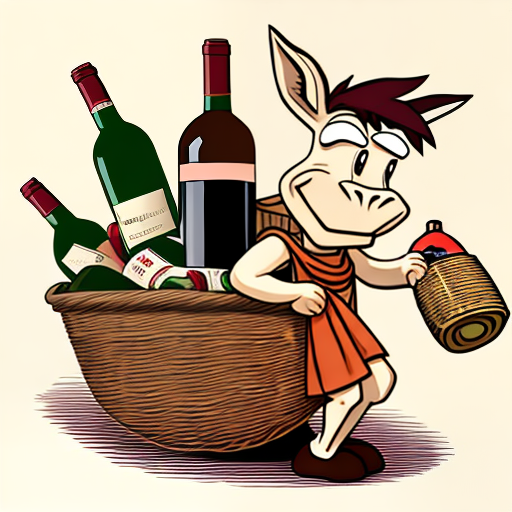The weird and wonderful world of Portuguese red wine grapes
Ever heard of a grape called Baby Don’t Leave Me? Or Rooster’s Heart? How about “Little Male Damsel”? Are you chuckling yet?
Most of us know common grape names – Cabernet Sauvignon, Merlot, Syrah, Reisling, Chardonnay, etc. But most people (like me although I’m learning!) have never heard of the thousands of grapes around the world (and their thousands and thousands of different names) that are used to make wine.

Ana Reis, who was a guest on my podcast for a two-part interview (listen to part 1, listen to part 2) and I had a lot of fun when we talked about the grape names of Portugal. When you listen, you’ll hear me laugh as I butcher the pronunciation of these names. Because I believe that the more you know about wine, the more fun it is to taste wine, I decided to write about the oddly named red grapes of Portugal that I’m willing to bet you’ve never of!
Let’s get started… if you’ve had Spanish wine, you may know the grape name Tempranillo. In Portugal, that grape name is Aragonez. Oh, but wait – in Portugal, it’s also known as Tinto Roriz! Aragonez and Tinto Roriz are pretty common in Portugal though, so here are some that are way more odd (courtesy of Ana – thanks Ana!)
Amor-Não-Me-Deixes. Translation: Baby Don’t Leave Me.

Ok, wouldn’t you love to have a bottle of that? According to my research, this grape was one of the most common varieties used in Languedoc-Roussillon, France from the late 1800s up to the 1960s. Who knew? Maybe that’s a bottle of wine you’d like to share with your romantic partner if you sense trouble brewing (just a suggestion).
Amostrinha. Translation: Little Sample. Other synonyms are Preto Martinho Aveiras, Preto Martinho do Oeste and Preto Martinho Ribatejo.
Don’t know about you, but I’d prefer a big sample please!
Carrega Burros. Translation: Donkey Carrier. Also known as Esgana Raposas and Malvasias.

Coração de Galo. Translation: Rooster’s Heart. Hmmm… I can’t imagine how this one was named. And talk about rare! According to my research, as of 2016, there was only ONE hectare (2.47 acres) of this grape planted in a vineyard.

Deliciosa. Translation: Delicious. What a great name for a grape! I couldn’t find much on this one, so let’s just enjoy the name.
Donzelinho Tinto. Translation: Little Male Damsel. Ok, I confess I’m having a hard time getting my head around this one. I always thought a damsel was female but who am I to question the names of grapes?
Esgana Cão Tinto. Translation: Red Dog Choker. Is it a choker for a red dog or a dog choker that’s red? I’m going with the dog choker that’s red.

Padeiro. Translation: Baker. Interesting. I don’t really associate red wine with baking. I guess it depends on what’s being whipped up. From what I can tell, this grape is a rare grape grown only in the Minho Province of Portugal and has been brought back to life by Quinta da Raza. There are synonyms for this grape but I got confused reading all the information about this grape, so I’m going to leave it at this. Nobody really knows why this grape has this name.

Rabo de Ovelha. Translation: Sheep’s Tail.
Rabo de Lobo. Wolf’s Tail. (I’m seeing a theme here). One of the translations for each of the “rabo” grapes here was “butt” but I’m going with “tail”. I’d rather drink wine made out of a tail than a butt. I think. What about you?

Tinta Miúda. Translation: Small Red One. That name probably says it all. In the Rioja in Spain, it’s known as Graciano, and in Languedoc, France, it’s known as Morrastel (not Monastrel but Morrastel, just in case you think I got it wrong). I kid you not, this grape has 115 synonyms… I couldn’t believe my eyes. Let’s just leave it at this.
Until next time, keep checking for podcasts that come out every two weeks. You never know who will be my guest at Wine Behind the Scenes, where wine, life and fun intersect.


Leave a Reply